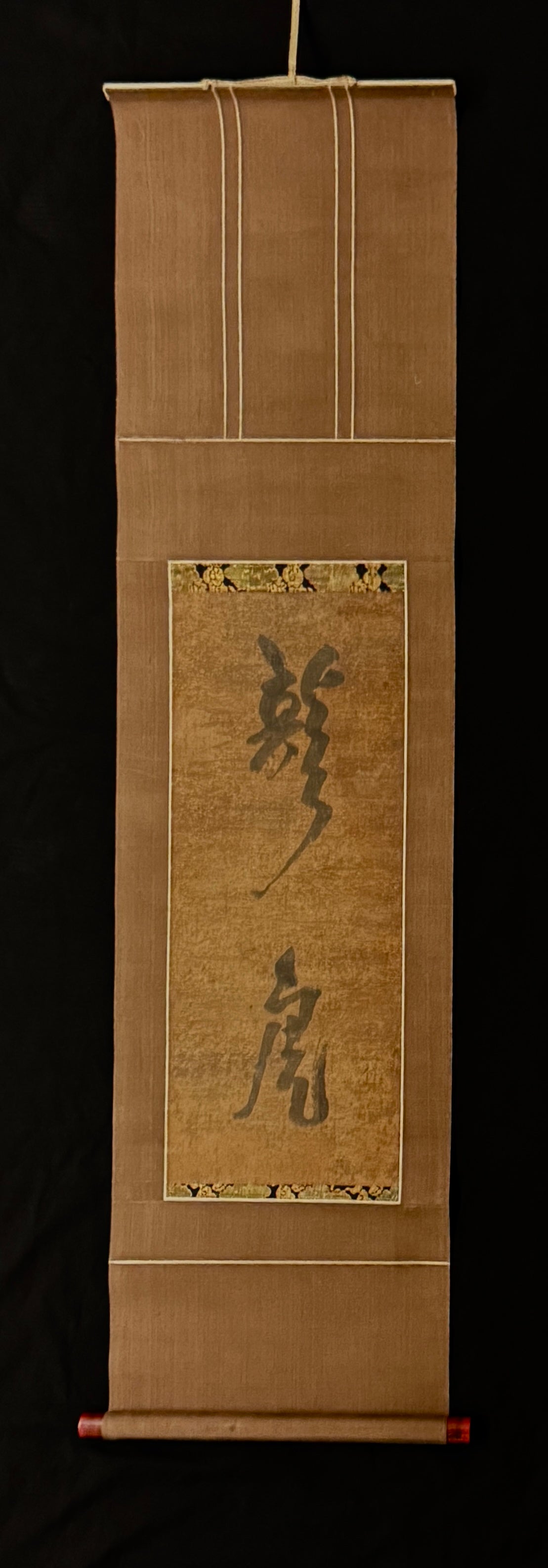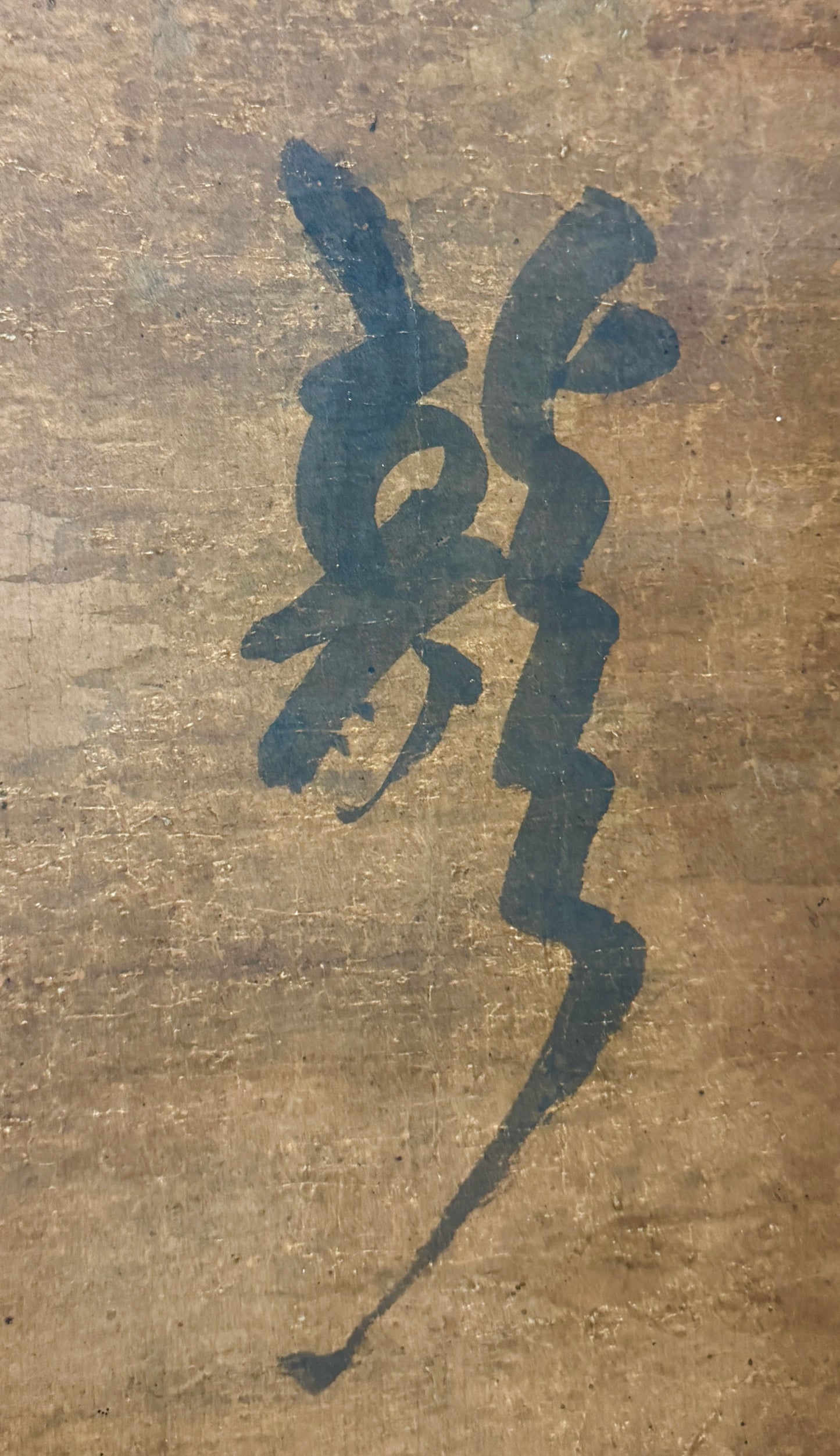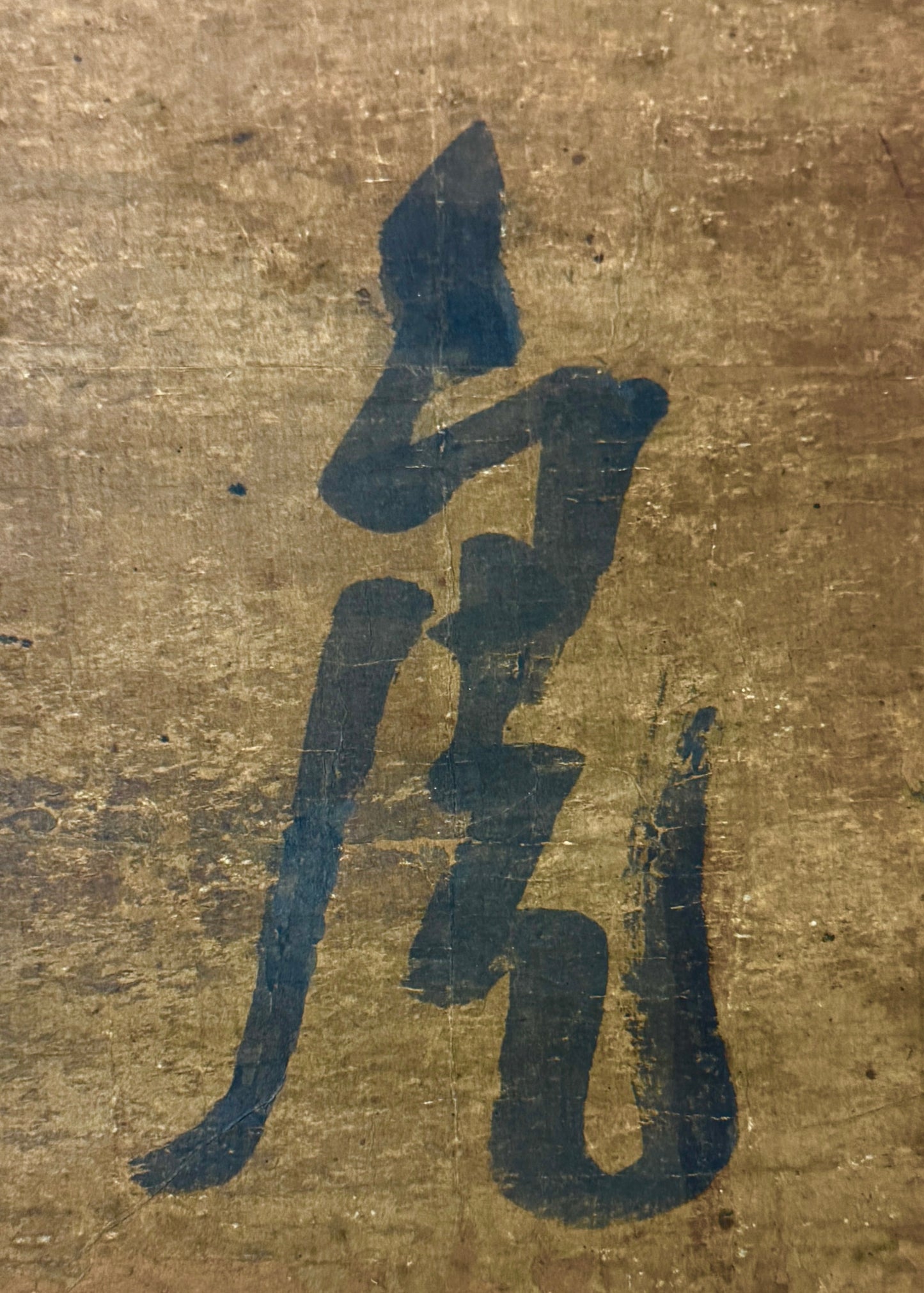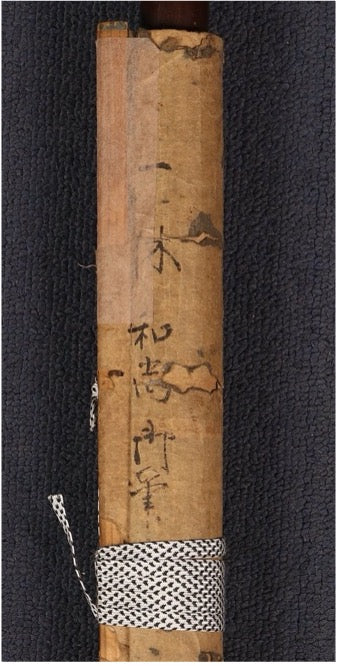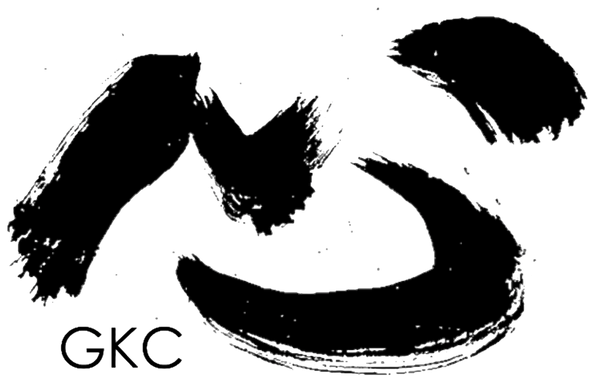Guignard Kyoto Collection
Calligraphy Ryūko 龍虎 Dragon-Tiger | Ikkyū Sōjun (attr.) 一休宗純 (伝)| 1394-1481
Calligraphy Ryūko 龍虎 Dragon-Tiger | Ikkyū Sōjun (attr.) 一休宗純 (伝)| 1394-1481
Couldn't load pickup availability
Ikkyū Sōjun is one of the most extraordinary poets and Zen priests in Japanese history. His entire life was marked by scandals such as insults against high-ranking persons and indecent behavior of all kinds. He frequented brothels in his monk's habit, believing that erotic experiences were conducive to enlightenment; he considered sexual intercourse a religious rite. At the age of 76, he fell in love with the musician Mori, with whom he fathered a daughter, and dedicated around 180 poems to his partner.
Ikkyū is probably best known today as a calligrapher (apart from the manga world, which has dedicated comic series to his tumultuous life). Since he lived to see the Onin Civil War (1467-77), which caused the greatest devastation in Kyoto, many of his calligraphy works have likely been lost; only a few completely preserved examples have survived.
This calligraphy was in poor condition and required extensive restoration. Unfortunately, the inscription at the top of the back, 一休和尚御筆 ("Ikkyū Priest, Honorable Brush"), was lost during the restoration. However, since the calligraphy is unsigned and lacks a seal, this inscription, while valuable, is not entirely sufficient for authentication. However, the deep, dark brown paper indicates the painting's great age.
The calligraphy consists of two characters: 龍 and 虎, dragon and tiger. The two concepts symbolize "heaven and earth." The calligrapher lets the dragon, with its swishing tail, move freely in the air; all the individual strokes flow smoothly, making one forget that the character itself, 龍, actually appears very constructive with its many horizontal strokes. In contrast, the tiger 虎, with its almost realistically painted upright tail, stands poised and firmly planted on the ground. While both characters have a similar style (they were probably written at the same tempo), they are distinctly different in character, in keeping with the symbols they represent. Both the dragon and the tiger have an almost majestic aura, with the generous amount of empty space surrounding them.
